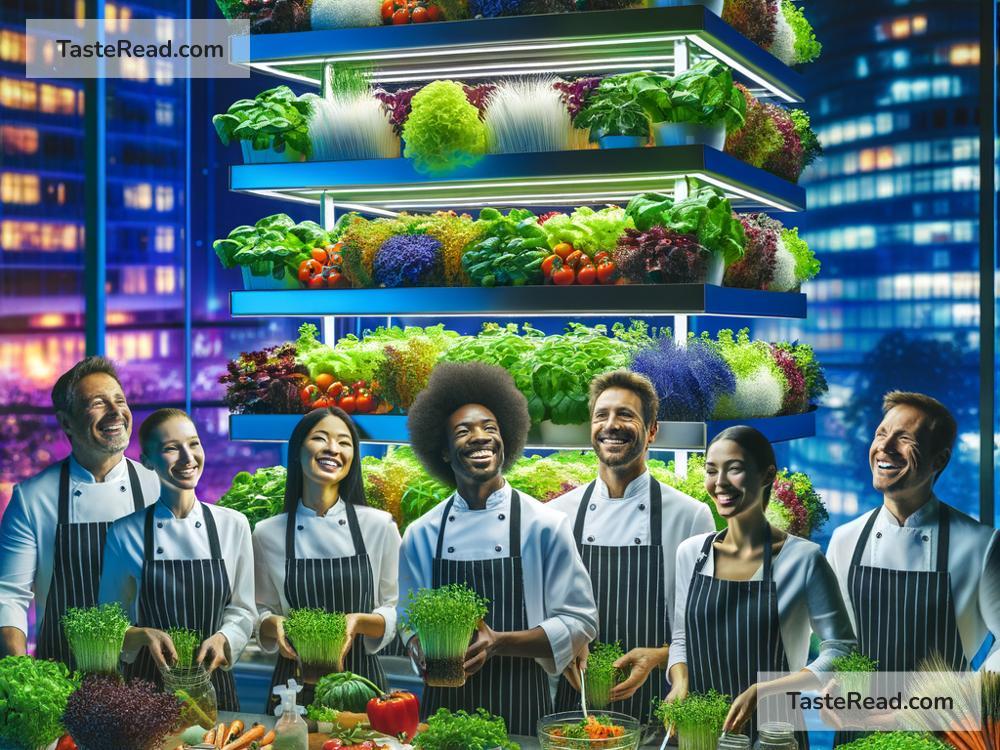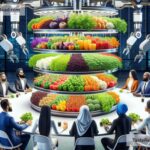The Future of Food: Collaborative Global Practices for a Better Tomorrow
Food is more than just fuel for our bodies—it connects people, shapes cultures, and drives economies. However, as our world changes, so does the way we grow, share, and eat food. With a rising global population, changing climates, and limited resources, we must rethink our approach to food production and consumption. The good news? The future of food holds exciting possibilities, especially when countries work together for shared solutions. Collaboration is becoming essential for creating a sustainable, equitable, and innovative food system that benefits everyone.
The Challenges We Face
Today, our global food system faces several major challenges:
-
Growing Population: By 2050, the world’s population is expected to reach nearly 10 billion. Feeding this many people will require 70% more food than we produce today.
-
Climate Change: Rising temperatures, unpredictable weather, droughts, and floods are affecting farms across the globe. Many crops struggle to grow in these changing conditions.
-
Resource Scarcity: Land, water, and energy are limited. As demand grows, we must find smarter ways to use them.
-
Food Waste: About one-third of all food produced globally is wasted every year. This waste occurs everywhere—from farms to supermarkets to dinner tables. Meanwhile, millions go hungry.
-
Inequality in Food Access: While some countries face obesity and overconsumption, others struggle with hunger and malnutrition.
Clearly, these challenges require big changes. But no single country or community can solve them alone. It will take global collaboration.
What Does the Future of Food Look Like?
The future of food could be very different from what we know today. Scientists, farmers, governments, and businesses are already exploring innovative solutions. Here are some key trends shaping how we’ll eat in the future:
1. Alternative Proteins
The demand for protein—like meat, poultry, and fish—is growing, but raising animals for food is resource-intensive and contributes to greenhouse gas emissions. To address this, scientists are developing alternatives such as plant-based meats, lab-grown meat, and insect-based proteins. Plant-based options, like those made from soy or peas, are already popular. Lab-grown meat, grown directly from animal cells, eliminates the need for farming animals. These alternatives may play a huge role in reducing environmental impact while providing nutritious food.
2. Precision Agriculture
Modern farming is becoming smarter, thanks to technology. Precision agriculture uses tools like drones, sensors, and artificial intelligence to monitor crops and soil with incredible accuracy. By using these tools, farmers can apply water, fertilizer, and pesticides only where needed, reducing waste and boosting yields. This method helps conserve resources while growing food in a changing climate.
3. Vertical Farming
As cities grow, farmland becomes scarce. Vertical farming offers a creative solution by allowing crops to grow indoors in stacked layers, often using LED lights instead of sunlight. Vertical farms can thrive in urban areas, producing fresh food near consumers while reducing transportation costs and emissions.
4. Genetically Modified (GM) Crops
Scientists are using genetic modification to make crops stronger and more adaptable to climate challenges. For example, drought-resistant corn or disease-resistant bananas can help farmers grow food in difficult conditions. While GM crops remain controversial in some places, they hold huge potential for future food security.
5. Community-Based Food Systems
Local and urban farming initiatives are gaining momentum. These systems encourage communities to grow their own food, reducing dependency on global trade and ensuring access to fresh produce. Food cooperatives, community gardens, and farmer’s markets are powerful tools for building resilience.
Why Collaboration Matters
Solving global food challenges will require teamwork on several levels—between countries, industries, and people. Here are some ways collaborative global practices can shape a better food system:
Sharing Knowledge
Countries that succeed in certain farming techniques or technologies can share their expertise with others. For example, Israel has pioneered water-saving irrigation techniques that could be extremely helpful to drought-prone regions in Africa or Asia.
Promoting Fair Trade
Fair trade practices ensure that farmers in developing countries receive fair prices for their crops. Global policies promoting ethical trade can reduce poverty and empower communities, leading to greater food security for everyone.
Tackling Food Waste Together
Reducing food waste requires a global effort. Supermarkets, restaurants, and households in wealthier countries must find ways to waste less, while better storage and distribution systems can help farmers in poorer regions save crops that might otherwise spoil.
Global Investment in Innovation
International organizations like the United Nations, World Bank, and private corporations are pooling resources to fund research into advanced food technologies. From lab-grown meat to climate-resilient crops, these innovations depend on global investment.
What Can We Do Individually?
While global collaboration is key, individuals also play an important role in shaping the future of food. Small actions, like reducing food waste, eating more plant-based meals, or supporting local farmers, can add up to make a big difference. Educating ourselves and advocating for policies that promote sustainable food practices can also create meaningful change.
Conclusion
The future of food is full of possibilities, but it also requires us to act now. We must combine innovative technology and global teamwork to build a food system that feeds everyone while protecting the planet. Countries, industries, and individuals all have a role to play in this transformation.
By embracing collaboration and taking bold steps forward, we can ensure that food—as essential to life as air and water—remains abundant, sustainable, and accessible for generations to come. Together, we can create a brighter, healthier future for people and the planet.


